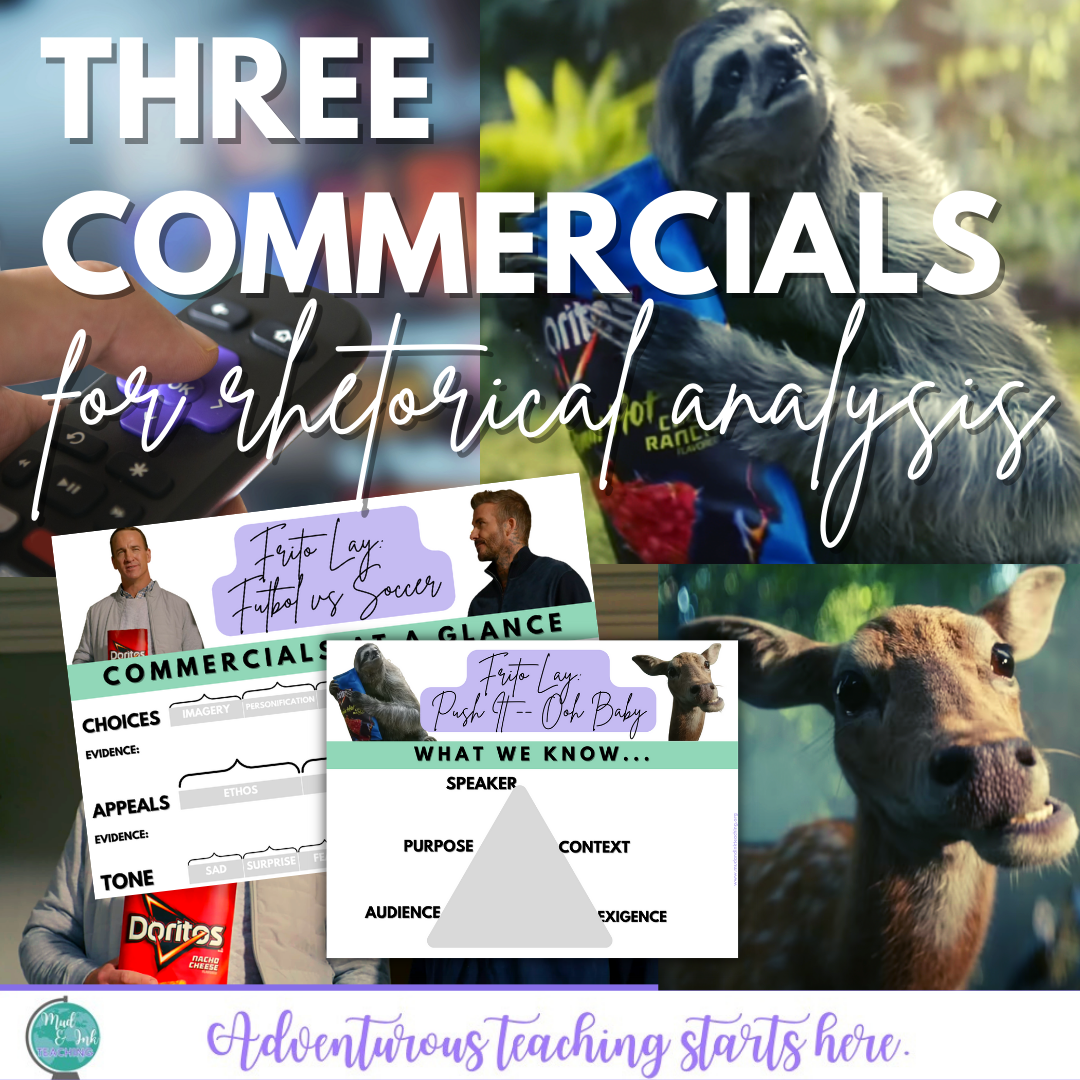
ADVENTUROUS TEACHING STARTS HERE.
11 Best Movie Scenes to Introduce Rhetorical Analysis
Rhetorical analysis is a skill that needs practice and reinforcement all year long. Using various moments from movies and film offer a great chance to examine both the rhetorical situation and the arguments themselves. Check out these eleven movie suggestions to teach rhetorical analysis including various Disney movies, The Notebook, and We Are Marshall.
3 MORE Commercials for Rhetorical Analysis
Rhetorical analysis is a skill that needs practice and reinforcement all year long. Use this template and three commercial suggestions to help you get going with rhetorical analysis in your classroom.
3 Super Bowl Ads to Analyze for Rhetorical Analysis
Rhetorical analysis is a skill that needs practice and reinforcement all year long. Take a break from what you’re doing and tackle these Super Bowl ads together for students to practice discussion and analysis in an entertaining and engaging lesson.





